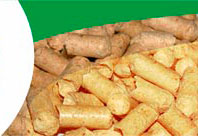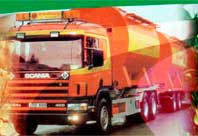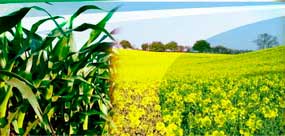Estonian waste biomass

In 2006, Estonia produced approximately 20 millions tons of disposals. Oil shale mining, oil shale chemicals and power generation are the principal sources of disposals (approximately 95% of overall amount). As per authoritative sources information the municipal wastes share makes 3,5%, which makes around 500 000 t, or 400 kg per capita. The same source gives forecast that until 2013 waste production will grow by 5% annually thus making 700 000 tons every year, together with combustible fraction that will reach the level of 80% at the account of weight, and biowaste will grow up to 65%, In Estonia, packages 25–30 %.
Estonian government treats solid waste management on a serious level and has\ strictly defined national targets concerning this issue. Most of Estonian governmental acts concerning the aforementioned issue reflect mostly the ones of EU. In order to structurize all aspects of this issue, the Estonian government has elaborated National Waste Management Plan as a strategy providing the basis for waste management system. This system is based on the following internationally approved principles:
− disposals appearance prevention,
− reduction of the waste quantities and their negative impact,
− wastes recycling in direct reuse or material processing,
− biological processes (aerobic composting and anaerobic gasification),
− energy recycling (wastes cremation together with energy generation),
− wastes placement to environmentally safe landfills.
Landfilling has always been the principal method of municipal waste disposal. Estonia has five modern land fields: Jõelähtme, Väätsa, Uikala, Torma and Paikuse. This fact according to competent sources opinion may tell about significant success on old dump land field usage termination. The last remained land field had been closed on July 16, 2009. This closure remained South-East Estonia and Saaremaa (Estonian islands) without landfilling sites, thus speeding the implementation of new waste processing methods.
The most serious problem of Estonian environmental protection is biodegradable waste reduction in landfills, the percentage of which should comprise according to state regulations no more than 45% by weight by 2010; not more than 30% by 2013; and not more than 20% by 2020. The said regulations implementations can be achieved via significant equipment improvement, bio treatment or incineration. Experts forecast the usage of all specified methods in complex: e.g Mechanicel-Biologicel Treatment (MBT) recyclables separation by mechanical sorting, waste fuel separation via air classification, and wastes composting before landfilling.
The usage of municipal waste is regarded as an alternative for non - renewable energy sources replacement. The first step is wood waste usage as energy source. Plus paper, cardboards and certain types of plastic together with municipal waste are planned to be used for energy generation in Estonia. By introducing the aforementioned steps Estonia will fulfill two principal demands put forth to waste disposal: a) reducing the organic content in the wastes sent to landfilling; b) fulfilling the goal which goes about untreated wastes non- disposal. But the process described is slow due to the fact that country has no national targets concerning the issue specified.
The energy production with the help of cremation is convenient for large cities as they have enough wastes in their disposal together with energy consumers. The said wastes processing method has bigger popularity than the one related to disposal; nevertheless material recycling is more preferable than energy recovery. Plus such waste processing type - incineration (including co- incineration with other fuels) corresponds to EC Directive 200/76/EC requirements.
For the present moment Estonia has no wastes crematoriums build already, only four projects under development. Industry experts provide the following development details: capacity - up to 480-660 000 tons per year, which significantly exceeds the existing amounts of municipal wastes. The aforementioned number prompt to the thought that other wastes sources should be used as well - waste wood, timber from construction and demolition waste.
Plus, experts specify the following: as waste wood is regarded as biomass it cam be burned in conventional boilers chambers as well, taking into account it should not contain dangerous substances. The said fact reminds that such wastes treatment requires genuine sorting.
Speaking about wastes treatment in Estonia, one should specify the fact that municipal authorities promote packaging wastes re -use and recovery, where about 60% must be separated by source and bigger part of it should be used as supplies. Common Estonians are more and more prone to such innovations and such innovation gains more popularity among common Estonians. Though according to industry professionals point of view packages can not be regarded as main energy source.
Recently private companies have been responsible for waste collection, sorting transport and recovery. Than, appeared the principle of “polluter pays” and “manufacturer responsibility”, which has become significantly efficient in package and electronic appliances waste handling. Such handling has been sent to municipalities responsibility, which simplified targeted collection and combustibles delivery to crematoriums and plants.
Biomass industry professionals regard biogas from wastes (sewage sludge, wet fraction of organic wastes, and landfill gas) as alternative energy source as well and specify that its‘ usage will correspond to national waste management target requirements - methane emissions reducing.






